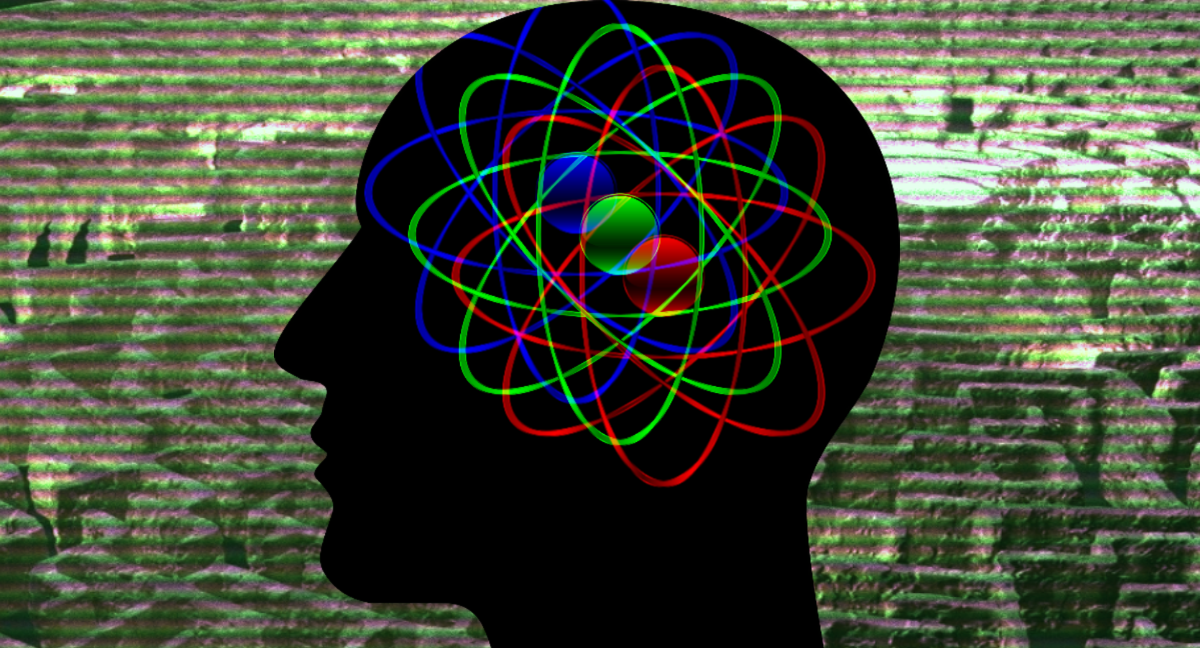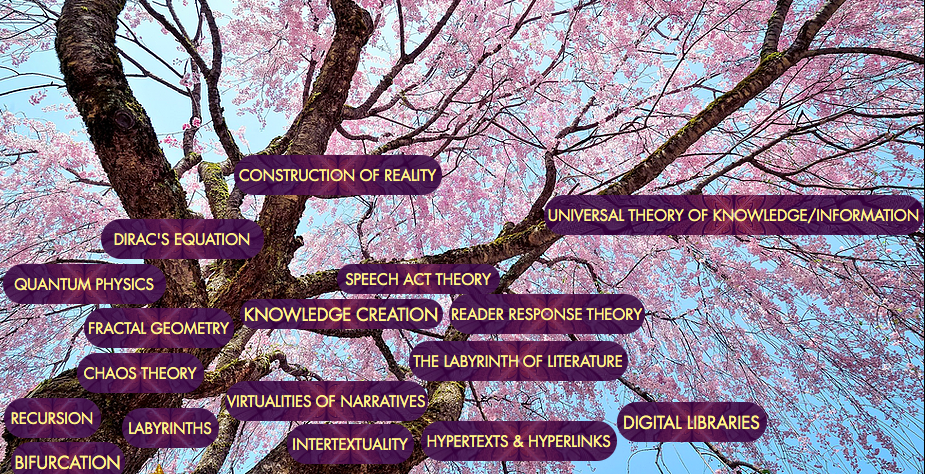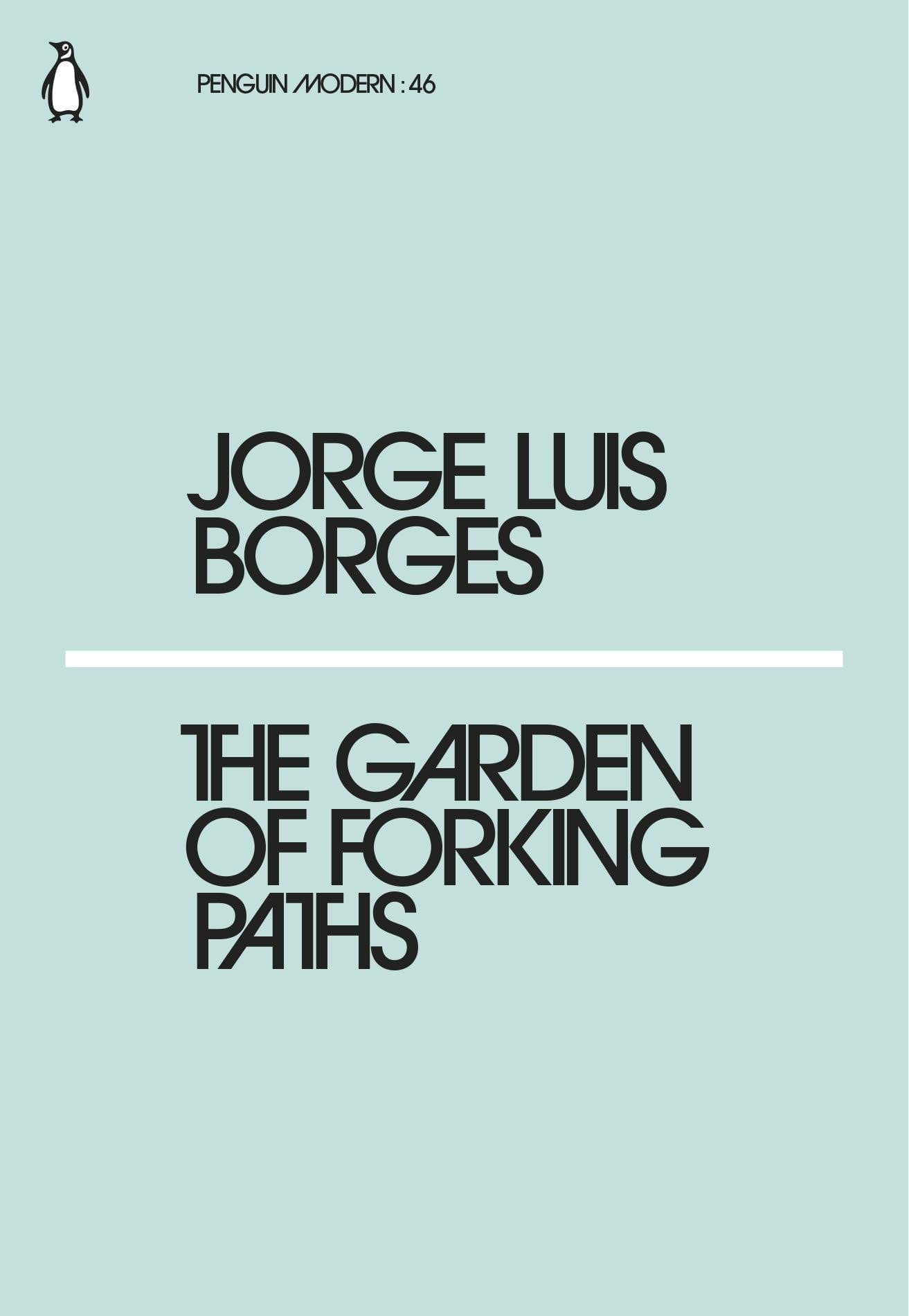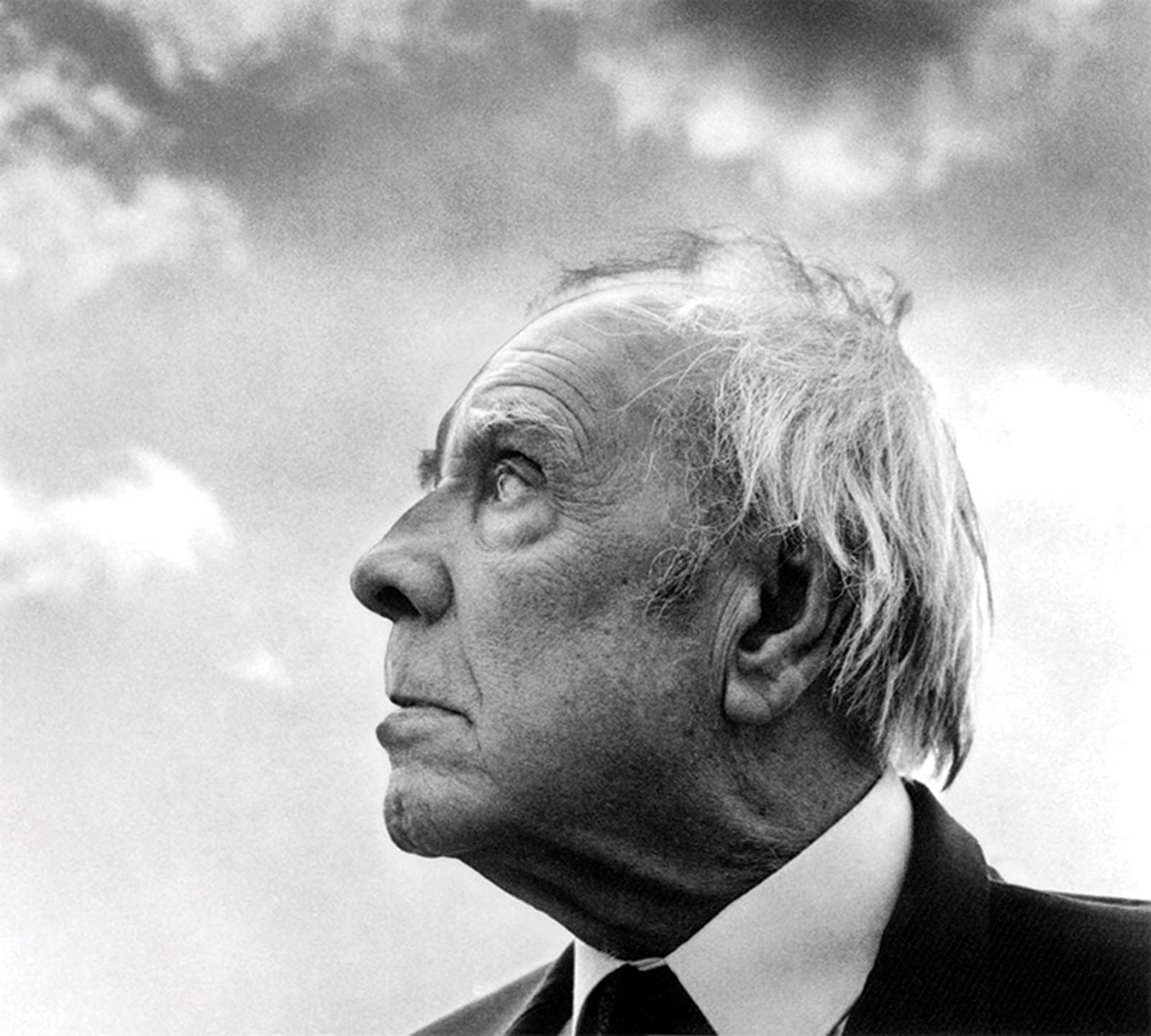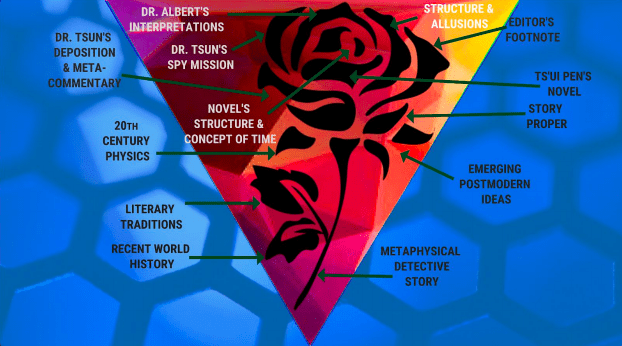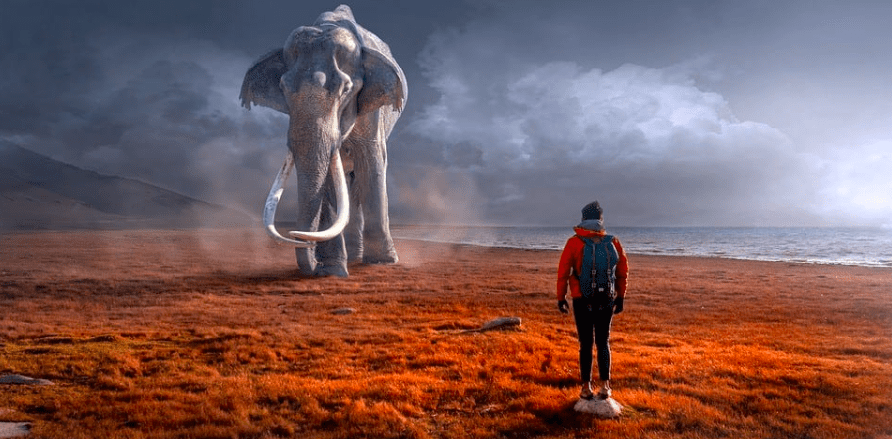With The Garden of Forking Paths, Jorge Luis Borges Created a Quantum Hypertext Decades Prior to Many Published Theories
To see a World in a Grain of SandAnd a Heaven in a Wild FlowerHold Infinity in the palm of your handAnd Eternity in an hour
If within a grain of sand lies the gate of the universe, then Jorge Luis Borges’ The Garden of Forking Paths emerges from the center of that grain as a twirling pinwheel.
Now, before you dismiss this whole endeavor as mumbled non sequitur, let’s try this again:
It’s 1941, years before “quantum physics” was a household phrase, 34 years before fractals would become discovered and 20 years before comic books depicted a multiverse, a man going blind in Argentina imagined the world and time in a way that foreshadowed the future culture, science and tech of the world. Equating time and universe, infinity and eternity, author and reader and the human psyche with cosmic space, the story that emerged from this man’s deep-seeing eyes would firmly seat itself at the center of the universe in many delicious ways. Only, no one knew that then . . .
Not only would the author, Jorge Luis Borges, not be discovered by the Western world until 1961, but most of the familiar concepts of today would be far from realization, being decades away from becoming part and parcel of our everyday thought and speech. Yet in 1941, he had already captured all that was to come in one masterstroke: The Garden of Forking Paths.
Describing Borges’ Hypertext with Hypertext
If Borges’ Garden could be considered an origin story of the world as we are familiar with it today, this article is a love-letter to the tale, while also being an origin story for a hypertext celebrating the man and the story.
Why celebrate Borges in the form of a hypertext? True, he is often called the father of the hypertext. His Garden showed the world a new way of telling a story by packing it into many levels. He left clues and connections across these levels so readers can figure it out as they read along. If that sounded like the structure of a Christopher Nolan movie, it should have. However, hypertext is just scratching the surface of the barrel with Borges and his Garden. Ironically, to depict the extent of influences on the modern world deriving from a single concept in a single story in one author’s roster, hypertext seemed not only the pitch perfect but the only medium for the job.
The lower tree on the above image shows a concept map of the story proper. The upper tree shows the outward branches, say, the growing legs of the forking paths, that take in nearly everything in the universe in their run. This hypertext is a work in progress and should remain so as connections and pages explaining those connections are added over time. Funnily, the story itself speaks of this property:
a labyrinth of labyrinths, … one sinuously spreading labyrinth that would encompass the past and the future and in some way involve the stars
Borges Expressed A Fork in Time and A Fractal in Execution
In The Garden of Forking Paths, Borges indeed conceives of time and the universe as a labyrinth. Not only that, he structures the story around it as a labyrinth for the reader to deconstruct. Then to reinforce the theme, he evokes the images of at least five physical labyrinths in the story. The genre of the story is a “metaphysical detective story” which uses the genre trappings of a detective story to solve central mysteries that are not about murders or robberies, but rather hefty riddles about the nature of the universe. Borges’ unique contribution is that he shaped the twists and turns of a detective story with metaphysical intent into the bent of a labyrinth.
Labyrinths or mazes are, basically, series of forking paths that lead to a center. Thus was the labyrinth an ideal symbol for Borges’ to clothe his story in. The central mystery of the story is about a fictional novel-within-the-story called, of course, The Garden of Forking Paths.
For instance, the main character of the novel-within-the-story dies in one episode but is alive again in the next. The detective character in Borges’ story deduces that the author of the novel believed in simultaneous worlds. That all the possibilities in life that we never experienced in our reality actually do happen but in their own planes in the multiverse.
Multiverse and Borges As A Character Create a Metaphorical Mirror
The astute readers would have detected several heady concepts in my partial summary of the story. There is self-reflection or mirroring here: the author of the novel-within-the-story is a stand-in for Borges himself who is presenting his unique vision in the form of a labyrinthine story by making it about a labyrinthine novel based on that unique vision.
There is recursion in the story. Themes are developed in multiple ways many times over. Nearly every paragraph of the story is packed with little signs or patterns here and there that augment or illustrate the labyrinthine quality of the structure and the central concept of time.
Not only are mirroring metaphors repeated then, they are repeated across multiple levels of the story adding more meanings and layers.
It is this layering of the themes and literary devices across multiple levels of the text that makes it a hypertext. It earned Borges the title of the father of the hypertext retrospectively, after Ted Nelson coined the term in 1963. This type of recursion is not just a recursion then, as the figure above depicts. It is a fractal iteration, that creates new patterns and pictures as it repeats it’s own reflection on a loop. An added tier is to create these iterations across various levels of hypertext. The following ones depict the many hypertext layers in this story as rose petals, as well as the scaffolding connections across the levels with references to labyrinths or their deployment as a literary device.
Thus in one astounding construction, Borges has captured the heart of feedback loops, chaos theory, the butterfly effect, hypertexting, Project Xanadu, the Mandelbrot set, fractal geometry, the reader-response criticism, the fragmentation of self, the death of the author and myriad more aspects of postmodernism. And we haven’t mentioned any physics yet. We should now.
Forking Paths and Quantum Supremacy
The 1940s was the decade of the garden. It was a flourishing time in the world of theoretical physics. Einstein lighted the world on fire with his ideas on different kinds of relativity. Schroedinger’s cat was out of the bag (or was it?) and scientists were still wrapping their minds around the idea that a single subatomic particle could occupy more than one state simultaneously in it’s private existence (superposition principle).
That it randomly assumed a specific position once an observer decided to observe or measure it.
This revolutionary idea had given humanity two jolts, quite on the level of Galileo’s. The first jolt was that the apparently solid and very much tangible physical states of matter, when we look deep enough into them could be made up of very immaterial, theoretical “possibilities of existence” that become reality only when someone looks.
Our tangibility then became relative, giving an eerily literal interpretation to old maxims such as “Beauty is in the Eye of the Beholder”, “The Peacock did not Dance in the Forest if no one Saw it”, etc. This idea would turn out to support Dirac’s equation which asserted that for every particle in the universe, there is an antimatter particle with exactly identical properties. Now scientists contend that our moment to moment physical existence could be, at the subatomic level, the outcome of constant interaction between matter and antimatter. That the outwardly stable, substantial reality around us could well be the result of very immaterial and dynamic processes constantly in flux.
Where the first jolt shook the foundation of our reality, the second jolt naturally targeted the foundation of truth. How can we ever claim to know anything for sure, when it is our act of observing the thing that magically materializes it in that particular state?
And with this question, we have circled back into the thick of the riddles hidden in that novel-within-the-story. Borges wrote and structured it in a particular way, but it’s unriddling depended on a British sinologist (the detective character) who pored over the novel for decades, finally communicating his interpretations to the story’s main character who is a descendant of the novel’s author.
This way, the reality of the novel and its concept of time become married to the act of it being deciphered. The novel and the structure are the author’s. But the deductions, interpretations, the solution and its communication are owned by the sinologist. The observer maketh the observed. The eye birtheth the beauty. The peacock’s dance, even if it was danced centuries ago, owes its existence to the spectator who goes in and comes out and tells the world. Hence, the death of the author. There is no author if there is no reader. Matter to antimatter.
Borges and the Living Labyrinth of Reality
Borges expressed these thoughts in many interviews later. He viewed literature like a collective stream, not unlike the collective unconscious concept of Carl Jung. In this living labyrinth of literature then, past works metamorph into new works as subsequent generations build upon them or add new meanings to old works. The filmgoers among us are right on brand if they are thinking sequels, prequels and reboots. It’s all part of the web.
From this fusion between the reader and the author, it is only one small leap to the death of the man. If my identity and reality is so ephemeral, transitory and immaterial that I wait for a reader centuries later to fuse with me and complete me, do I … can I … exist by myself?
Isn’t it the same question cyberpunks ask, only using the terms of a digital reality: Am I by myself or by my avatar and what it represents? Isn’t that what William Gibson was asking in his Neuromancer? Which Case is more real, feels more real? For the Case on the outside was trolling his friends like a shadow of himself, planning at any cost to return to that immaterial place – a collective hallucination.
Isn’t that what Neo and Morpheus tried to resist (but were always meant to fail at) to give in to the Matrix and accept it as the new normal? It seems scary to think that this world might be no different than a coming together of rays and particles that create what looks like a solid picture. But if you can see through it, it may be yet another representation we haven’t properly decoded yet. Is it all a holographic image of fractally iterating quarkly processes at the various levels of its creation? As may well be what we call our minds, consciousness or souls.
Borges’ story for The Garden of the Forking Paths and his concept of time and universe as created labyrinths that depend on subjective readers to assume reality cuts to the heart of physics and the soul of humanity. It also, strangely, foresaged the hypertechno-digital culture of our cyberpunk now. It makes us wonder if it’s only a matter of time before humanity decides to choose another level of representation as it’s preferred level of existence.
Scary but inevitable? Maybe we shouldn’t be scared when it arrives. Maybe it would be one more fork in time, one more iteration in our self-reflecting feedback loop. Maybe it takes us closer to solving the central riddles about our reality and place in the world that we all carry inside, unresolved and unrealized, until the right theorist turns up with a key.

